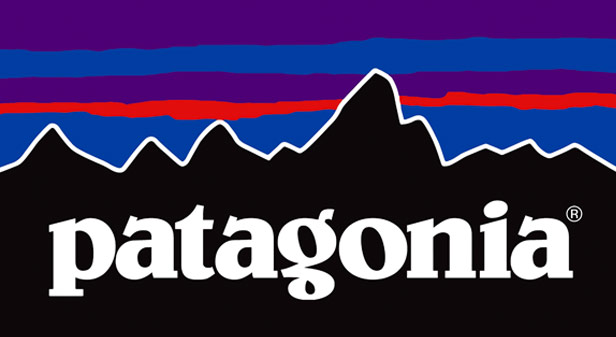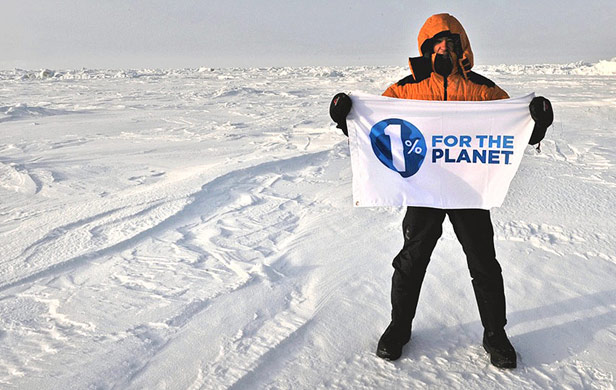Commentary April 14, 2021
Patagonia Misses the Forest for the Trees
The apparel company is banning added logos to help the environment, and while its intentions are good, it’s missing the bigger picture.
Helping the environment doesn’t typically get under people’s skin. But that’s been the case with Patagonia, which ruffled quite a few feathers last week with its announcement that it was forbidding the placement of additional logos on its wares because they “reduce the lifespan of a garment, often by a lot.”

How does it shorten the lifespan? In a missive on its website, the company states “People change jobs, and the extra logo makes for an awkward re-gift. People tend not to pass logoed gear down to their kids, and not everyone wants to be an advertisement on weekends, even if they’re proud to go into work on weekdays. The result? Perfectly good gear ends up forgotten in the closet – or worse, gets tossed in the trash.”
“When we made this decision, we accepted that it might cost us some business,” the company writes later on in the post. “But we hope you’ll see this shift for what it is: another of our ongoing efforts to support a healthy planet – and a call to action.”
Frankly, I don’t see it that way. Sure, Patagonia’s intentions are good – something I would expect from one the most prominent environmental stewards in the corporate world. But by eliminating branding, Patagonia is perpetuating fallacies about the promotional products industry that contribute to waste and disuse, instead of promoting values that make our industry a greater asset to the environmental movement.
Patagonia certainly has the right to decide who, if anybody, gets to advertise on its garments. Two years ago, the company announced it was shifting its corporate apparel strategy to cater to Certified B corporations, 1% for the Planet members “and other mission-driven companies that prioritize the planet.”
It’s not the only prominent retail brand to be so selective. Under Armour has been notoriously strict in its co-branding requirements. Ditto The North Face, which reportedly last month turned down an order of 400 jackets from a Texas oil and gas company. (In a playful or provoking response, you decide, the Colorado Oil & Gas Association then honored The North Face with its “Extraordinary Customer” award for being such a prolific buyer of petroleum-based apparel fabrics.)

Apparel brand Patagonia is a prominent voice for environmental activism and initiatives, including its support of 1% for the Planet, where companies donate 1% of their profits to environmental causes.
Now, Patagonia has taken the next step by declaring no additional logos can be put on its garments. To be clear, the company isn’t leaving the promo industry; its clothing is still available to distributors. But think of it more like an incentive gift – high-end products unadorned with logos, of which there are thousands of such quality items available to distributors. So, this isn’t a move without precedent. (Let’s also acknowledge that some buyers will eagerly take their blanks to the local decorator.)
Driving Impressions (asi/50864), which sells Patagonia items to the promo industry, acknowledged in a letter that “supply shortages,” along with “Patagonia’s mission,” contributed to the decision, leading some to believe that Patagonia is using its environmental claims as cover to escape a vertical it can’t properly serve.
But let’s take Patagonia at its word, that it arrived at this decision by putting the environment first. Yes, it’s likely that for high-quality brands such as Patagonia, an item without a logo is on average likely to be worn or kept longer than one with a company logo. (By the way, I don’t believe this is always true. Many blank items are elevated through elegant design, imprinting and packaging.) But it misses a greater point.
What’s the problem? Tom Rector, CEO of ScreenBroidery (asi/305623) in Indianapolis, IN, summed it up well in a LinkedIn comment. “Both [Patagonia’s] brand and company culture are very well respected. But when our customers want/need their logo on a jacket, they do so regardless of the brand of the jacket – if Patagonia is not an option, they choose another respected brand.”
He added: “If a customer is going to get an item logoed regardless of the brand, and Patagonia wants to control the garment’s lifespan to fulfill their mission, Patagonia should want people to logo their items and not other ‘lesser quality’ items.”
Very few buyers say, “Give me Patagonia or give me nothing at all!” Instead, they’ll just move to the next available option, often under the careful guidance of an expert distributor. Companies will continue to buy logoed jackets … or pens, water bottles, backpacks, mugs, speakers, T-shirts and so much more. We have a $20 billion industry built on that innate desire.
So, if that logo is already going on a jacket, doesn’t it make sense to put it on a high-quality garment that enhances value and extends longevity? Instead of flooding the marketplace with “cheap junk,” the promo industry is at its best when companies provide high-quality items that will be used and cherished by end-users. That engages buyers, boosts branding impressions and limits waste – a win-win-win.
When retail brands enter the promo space, they become part of the solution – not the problem.
When retail brands enter the promo space, they become part of the solution – not the problem. They edge out the inferior products that are thrown away and not used. They raise the bar for what’s expected of a promo giveaway. Adding a logo to a Patagonia jacket might be shortening the life of one item – but it’s also extending the life of the millions of items that are given away every year.
I recognize the promo industry is far from innocent when it comes to environmental considerations. Though promo companies have made significant strides in the past decades, there are still many more steps yet to be taken. And we know environmentally friendly products are increasingly important to buyers, particularly younger generations. Patagonia is providing a valuable service by continuing the discussion. The letter from Driving Impressions also states that Patagonia is reviewing “various non-permanent branding options.” While this may be standard fare such as packaging, it’s intriguing to dream up the possibilities of on-item branding that can be removed at a later point. There’s plenty of room for innovations that will lessen our industry’s environmental impact.
We’re a consumer culture. “Stuff” is going to be a part of our lives. The promo industry makes a difference when companies give out better, longer-lasting stuff. Patagonia wants to help the environment, and that’s a mission we can all agree on. But there are better ways to reach those goals than removing a logo from a jacket.

Product Hub
Find the latest in quality products, must-know trends and fresh ideas for upcoming end-buyer campaigns.

